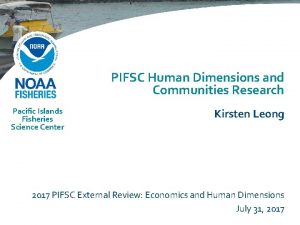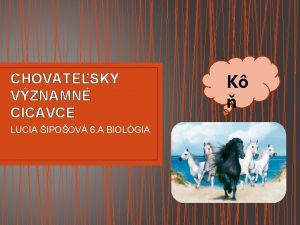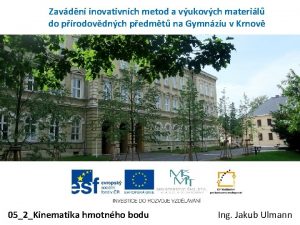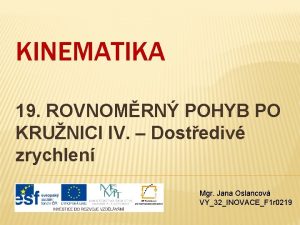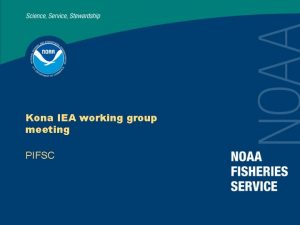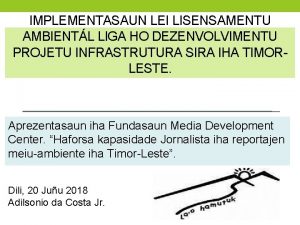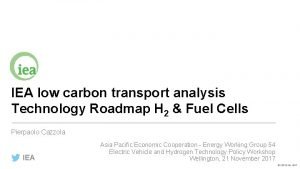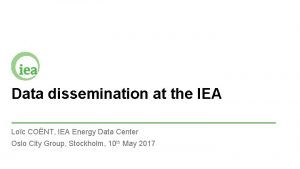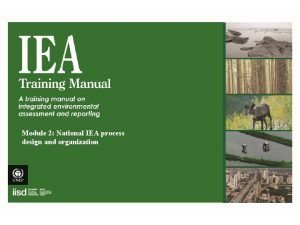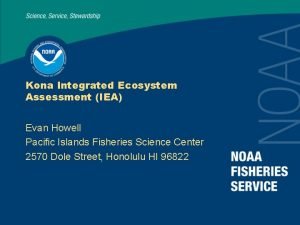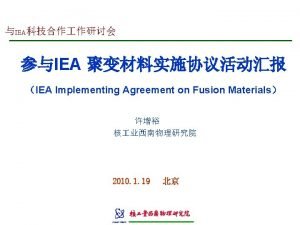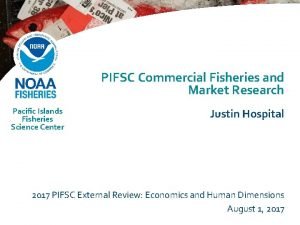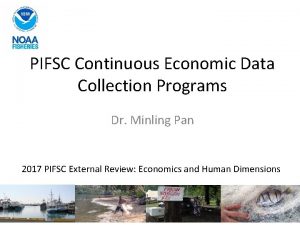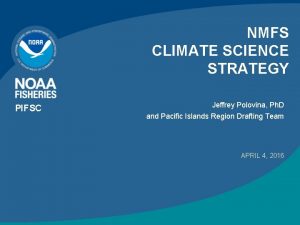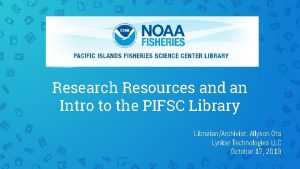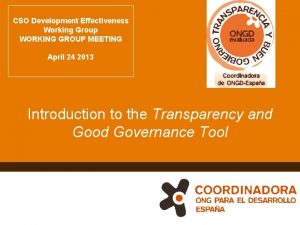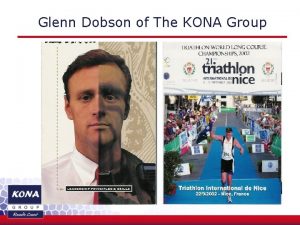Kona IEA working group meeting PIFSC Kona IEA














- Slides: 14

Kona IEA working group meeting PIFSC

Kona IEA meeting initial steps IEA 5 step process Scoping: What are our key (ecosystem) management issues? Identify: What are the main drivers of the system? Monitoring of ecosystem indicators and management effectiveness Work plan: what needs to be done and who will do it? Scoping Develop EI Risk Analysis Assessment of Ecosystem Status Management Strategy Evaluation 2

Scoping: What are our key (ecosystem) management issues? 1. Identify economic/anthropogenic impacts 1. Coastal dev. , aquaculture, ocean energy, etc 2. Positive impacts from tourism (capacity to sustain? ) 2. Impacts of fishing (extractive) 1. Commercial/non-commercial/subsistence (Trad vs Mod) 3. Effects of climate change on Kona region 4. Shared user areas (MPAs, Rec dive/Aq. Fish coll. ) 5. Introduced species/species diversity/endemic 3

Council key (ecosystem) management issues 1. Areas of larval retention (circulation model) 2. Aqua(Cage)culture (Also PIRO) Nutrient effect? Exotics becoming introduced? 3. Aquarium industry (model area of closure) 4. Billfish (catch data) DAR 20 yr. CPUE decline. Model closed area for Blue Marlin 5. Mapping out traditional knowledge 6. Private FADs (hated locally) 7. False Killer Whales 4

Kona (Non-official pilot project) Establish the foundation for Kona IEA development 1. 2. 3. 4. Scoping: Identify management goals, drivers Create data management infrastructure Review and develop ecosystem indicators Create/refine Ecosystem model(s) Deliverables — — — Identify and accumulate relevant Kona data sets (portal) (Y 1) Construct/refine ecosystem indicators (point, TS) (Y 1/2) Construct preliminary Kona Ecopath(sim) model (Y 1? /2) Negotiation of data-sharing and collaboration (Y 1? /2) 2 -3 page “brochure” detailing work to date and future IEA plan (external) i. e. “what would we do with funding” (Y 1) Action plan for work towards IEA (internal) (Y 1) 5

Next Steps Management Research Partners Collation Management EI Deploy/proj Outreach Models Data portal 6

Data portal – Embryonic stage 7

List 2 – Data and status 1. Kimberly: MHI MRI database, QLCC, Nat. HI wind database, Wespac. FIN 2. Stewart: FEAT, B. of Econ. Anal. , Dep. Of Labor, Census Dep. 3. Jeff/Reka: NDBC Buoys/Ocean models (e. g. HYCOM, tidal), satellite data 4. Ivor: HI 26 sites (4 x/yr)fish/coral cover (Kona sites? ) 5. Stacy: turtle data 6. Ed: 20 year N/S summer recruitment time series 7. CRED: CORIS database 8

List 2 – Data and status 1. Bob H: Kona cruise data 2. Marine Recreational data: Has “inland” but not specifically Kona 3. Ivor? : DAR 3 locations for coral reef fish (70 s) 4. Ed? : Ted Hobson’s Kona series 9

Drivers (EI): What makes a healthy Kona? 1. Physics – Trades (NWS), NEC speed/MEI? 2. Chemistry – Salinity Alkalinity? p. H? 3. Biology – Species abundance? Diversity? Indicator species (e. g. Yellow Tang, billfish catch? ), turtles (FPP). 4. Socio – Charter cost, beach closure, fish cost, gas cost. TBD 5. Geo(logy)graphy – Hot spots, KOAs, fresh water injection points, sediment (sed outflow) (GGP), Bathymetry 10

EI examples OTEC measurements (15 m at Keahole Pt) 11

EI examples National Data Buoy Center 12

Models: What is important to capture? 1. 2. 3. 4. Physical? – HYCOM, Tidal model? Kobayashi Chemistry? Water quality, Available? Biology/Ecology – Ew. E? MSA? Evan? Contract? Soc/Econ? Stewart? Contract? Similar to Ma et al. 2010, can we combine model frameworks to understand system, and effects from drivers 13

Work plan - 1. Evan 2. Ed 3. Stewart 14
